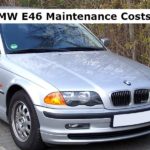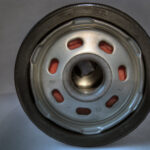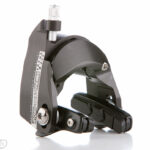Are European Cars More Expensive to Maintain? (Comparison)
So you are planning on purchasing a European car, maybe a Mercedes, VW, or BMW. This article will help you understand whether European cars are expensive to maintain, and why they might be worth the extra cost.
Are Europeans Cars More Expensive to Maintain?
If you are referring to the premium cars from luxury European brands such as Mercedes, BMW, or Audi, then compared to their American or Japanese counterparts, European offerings tend to be a bit more expensive to maintain. But if you are considering the more budget offerings, the difference in cost is negligible in most cases.
But if you are considering the more budget offerings, the difference in cost is negligible in most cases. In some segments, you might find that European cars are cheaper than American and Japanese cars in the same segment.
Here is a detailed look at the price differences between cars from different nations. The price is broken down into its various components to understand the differences between the brands.
Purchase Costs
European cars are expensive due to several and some of which you may not expect– such as exchange rates and labor costs. While some European cars are made in parts of the USA and Asia, the majority are still produced in Europe.
In developed countries such as the UK and Germany, the labor costs are relatively high, which in turn translates to a higher selling price for the cars. After that, the cars then have to be shipped to your country, adding yet another expense keeping the prices high.
Exchange rates can fluctuate from time to time. But the manufacturers cannot adjust the price corresponding to every fluctuation. And depending on the fluctuation, the profit can increase or decrease drastically. To cover fluctuations that may happen, the selling price will have to be a bit higher than the others.
Trending Video: How to Easily Bring Back to Life any Old Car Battery and Save Tons of Money (click to watch)
European cars tend to use higher quality materials for the interior and other critical components such as suspension. The sturdiness and luxury you feel are the result of these high-quality materials and excellent engineering, both of which come at a price.
Another reason for this is just the brand value. Customers perceive brands like Mercedes, Jaguar, and Land Rover to be of higher value than a Lincoln, Lexus, or Infinity because of their reputation. Which means they are ready to pay a premium to drive one of those.
Japanese car manufacturers produce high-quality cars that are supremely reliable at a very economical price. Therefore, Japanese cars provide a lot of value for money, especially if you are looking for cheap cars.
American manufacturers provide a good balance between performance, quality, and price. That is one of the reasons for the immense popularity of ford in many parts of Europe.
Also read: Are European Cars Reliable? Which Ones are the Best?
Fuel
Fuel efficiency is an important factor for determining the right car that fits your needs. Even though fuel efficiency depends on the segment of the particular car, certain trends can be observed within these segments.
Japanese cars are synonymous with fuel efficiency. The fuel crisis in the ’70s made Japanese cars popular in the USA and catapulted the brands to global fame and acclaim. European cars also tend to have a better fuel efficiency at least when compared to most American cars.
These trends can be traced back to the cost of fuel in these countries. Fuel is an expensive commodity in Europe and Japan, so manufacturers fuel-efficiency over other factors. They invest in producing sophisticated engines that are small and efficient.
In contrast, American manufacturers value performance over other factors. But this may not be the case for all the models, for example, Ford produces some models like the Fiesta and Ecosport for the international market that return decent fuel efficiency.
Insurance
Insurance costs depend a lot on the particular car and your location. But European cars are usually expensive to insure in comparison to Japanese cars, and American cars fall somewhere in between.
In general, the more expensive your car is, the more expensive it will be to insure, but it also depends on numerous other factors independent of the manufacturer.
Repairs
Repair costs depend on a lot of factors such as location, the parts that you use ( Original Equipment Manufactured or Aftermarket Third-Party ), or whether the repairs are performed by dealerships or independent repair shops.
If you live outside of Europe, European cars are very expensive to repair. All the OEM (Original Equipment Manufacturer) are mostly produced in the factories in Europe. They are expensive for the already mentioned reasons, such as high labor costs and the cost of the high-quality materials used.
In addition to that, there are transportation fees and import taxes. All of these costs can add up to a very expensive repair. On top of that, you will have to wait for weeks or even months for these parts to arrive, costing you even more valuable time. Even if you opt for third-party parts as a replacement, they are still expensive compared to American or Japanese car parts.
Independent mechanics and even dealerships may charge a higher labor cost for the European cars because of the complexity of the machinery, and some mechanics hesitate to work on European cars. Manufacturers like Mercedes and BMW are notorious for their over-engineered parts and sophisticated electronics. But this advanced engineering is what makes them fun to drive and gives a sturdy feel.
American and Japanese car parts are much more readily available. Even the OEM parts are relatively cheap and easily accessible. They are usually less complex than European cars, which means that you can easily find a mechanic to repair the car, and labor costs should not be high either.
Maintenance
When you consider the maintenance of a car for a long period, say ten years, European cars will certainly be more expensive to maintain compared to American or Japanese cars.
The most common maintenance task is changing oils and fluids. European vehicles use oils and fluids different from the ones used in American or Japanese cars. The oils and fluids recommended for European cars are generally of a higher grade, which means they will be more expensive.
But the average American or Japanese car requires an oil change every 5000 miles compared to 10,000 miles for a European car. As a result, it will be less expensive for an American or Japanese car to change the oil, but they will have to do it twice as often.
Other consumables such as brake pads, belts, hoses, bearings, etc. will be expensive for European cars. It is due to many reasons such as labor costs, transportation costs, and import taxes.
Repair shops require software to access the ECU, which is the ‘brain’ of your car. They can find errors in different components and warnings if there is anything wrong with the car or need replacement. The repair shop will have to license this diagnostic software which is specifically made for European cars, which can be a bit more expensive.
Also read: 5 Reasons Why Europeans Hate Automatic Transmission
Depreciation
Japanese cars are built to last. For Japanese manufacturers, reliability is the top priority. Even if the car was subjected to shoddy maintenance and abuse, you could expect it to last for hundreds of thousands of miles. Their build quality is also pretty good, and as a result, they are the least depreciating cars of the bunch. You will be surprised to see the prices for a used Land Cruiser or Civic from 15 years ago. They hold their value well.
European cars can be as reliable if not more than Japanese cars. But they require regular maintenance and quality replacements to achieve that. They usually have the best build quality among the lot, and if you can maintain them well, they should not experience a lot of depreciation.
American cars can experience considerable depreciation after a few years. If you maintain the car well without subjecting it to a lot of abuse, it might hold its value for a few more years.
Exact Calculation: How Much does it Cost to Maintain a European vs. Asian vs. American Car?
Let us consider three premium three-row SUVs from Toyota, Ford, and Mercedes. For this comparison, we take the ownership cost of Toyota Highlander, Ford Explorer, and Mercedes-Benz GLE for five years.
Also read: Japanese vs European Cars Comparison (Reliability, Price, etc.)
- Toyota Highlander:
Starting MSRP: $38,735
Insurance: $4,450
Maintenance: $4,380
Repairs: $690
Fuel: $9,170
Total: $57,425
Depreciation at the end of 5 years: $15,120
- Ford Explorer:
Starting MSRP: $32,925
Insurance: $4,100
Maintenance: $3,840
Repairs: $900
Fuel: $9,170
Total: $50,935
Depreciation at the end of 5 years: $20,200
- Mercedes-Benz GLE:
Starting MSRP: $54,750
Insurance: $5,650
Maintenance: $10,160
Repairs: $5,830
Fuel: $12,304
Total: $88,694
Depreciation at the end of 5 years: $28,070
As you can see, the Highlander and Explorer cost almost identical. The Highlander costs a bit more to purchase and maintain, but it depreciates significantly less at the end of five years. The GLE costs almost 70% more to purchase and costs almost double to maintain.






